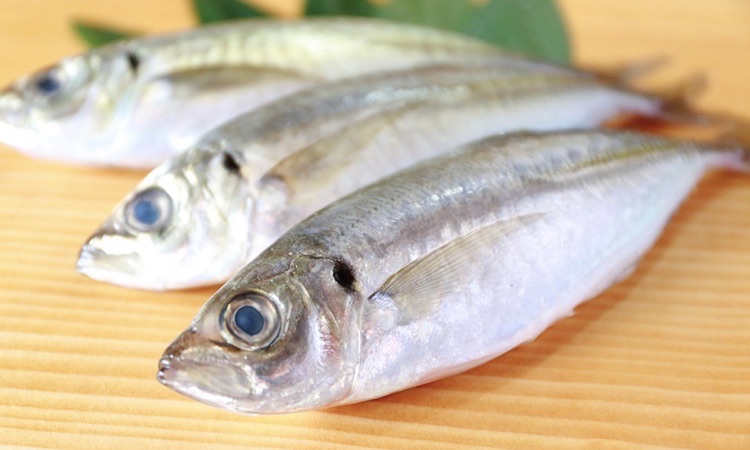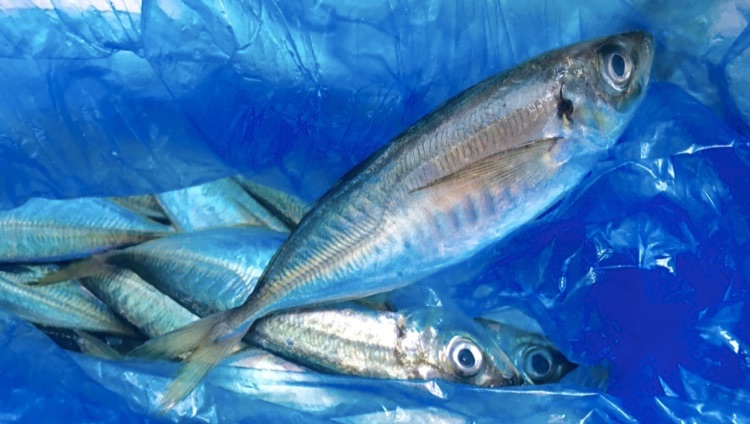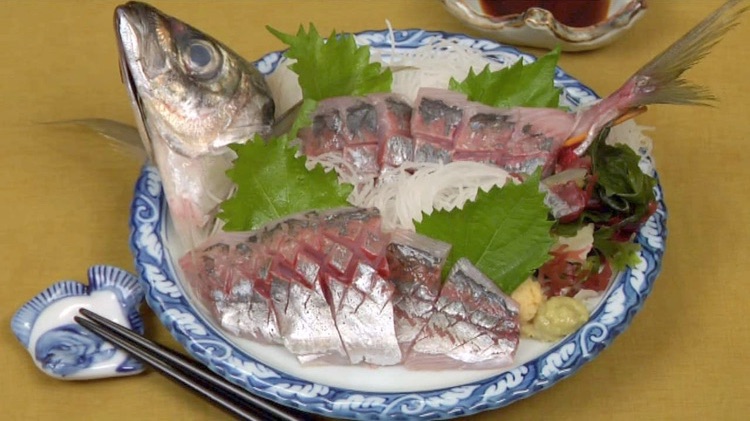Japanese horse mackerel, also called Japanese jack mackerel or Japanese scad, is a fish that looks like mackerel but is actually in the Carangidae family.
You can find them along the coast of Japan, with the exception of Okinawa Island. They tend to stick close to sandy bottoms. Read on to lean more about these interesting fish.

Appearance
The Japanese horse mackerel is a small fish whose average length falls between 13 and 40 centimeters. The maximum recorded size for this species of fish is 50 cm. These creatures are greyish blue on their backs, but they have silver-colored bellies with a black blotch near the gills.
The dorsal and pectoral fins of the Japanese Jack Mackerel are a dusky color, whereas its pelvic and anal fins are pale. One primary way to tell this fish apart from others is by its bright yellow caudal fin.
The scales on this species are similar to those of other fish in its family. They are dense and coarse, with a horizontal direction and a vertical direction. The midpoint of the scale is curved to follow the curvature of the animal’s body. The anterior half of the species has this curve, while the posterior half has straight scales. Any scales in between these two sections are pointed.
The animal has 14 vertebrae lining its spine, which is connected to the dorsal fin. Additionally, there are 10 more vertebrae on the underside of the creature that all feature fine ridges. This is a characteristic typical in other members of Trachurus family.
The dorsal fin is separated into two sections. The front eight bony spines and the rear one bony spine with 25-27 soft rays. All of these fins are controlled by three muscles and an abundance of ligaments.
The caudal fin on the side of jack mackerel is a more complex structure than most. With a series of 6 bones and more than 20 soft rays projecting outward. It’s also controlled by 6 muscles, making it capable of agile movements.

Habitat
The Japanese horse mackerel is a tropical fish that swims in the East China Sea and Sea of Japan. It lives between the coordinates of 46°N–13°N and 105°E–148°E.
The majority of this species lives in central and southern Japan, the Korean peninsula, and parts of south-east Asia including Taiwan. They can also be found in the Pacific Ocean off the coast of these countries.
The number of Japanese jack mackerel in southern and central China seas is significantly higher during winter months due to the colder water temperatures.
The best temperature for the species falls between 15–26 °C, with an ideal temperature of 21 °C. Since the East China Sea’s northern and southern areas differ in temperatures by 3–5 °C, migrating to these various regions is a helpful strategy for maturation.
Many waters provide good habitats for Japanese jack mackerels to spawn, which utilize the Kuroshio and Warm Tsushima Currents during their migration into the Japan or East China seas. The main spawning grounds lie along coastlines in Japan, with a large area located around Kyushu and southern Japan.
The majority of juvenile Japanese horse mackerel are found in the southern and central areas of the Eastern China Sea because the waters there are warmer. This increased temperature causes a higher survival rate for young fish with 82 – 95% of all of them living in the Southern Eastern China Sea being juveniles.
These fish are are not found at depths lower than 50 m and thrive between 20–50 m due to the higher temperatures. As they mature, Japanese horse mackerels can survive at depths up to 275 m.
What it Eats
The Japanese jack mackerel feeds on zooplankters, drift algae, and flotsam during its juvenile stage. As it matures, it has a wider array of food options available to it. However, it mainly sticks with copepods which are small crustaceans that measure 1–2 mm in size.
Did you know that the Japanese horse mackerel predominantly feeds on small shrimp or other tiny fish? Well, it’s true! According to research, this species typically hunts in large schools.
However, there have been a few cases of individuals living among reefs who hunt with jellyfish for both food and protection. They don’t eat jellyfish. But they do howevr utilize them for food collection and as a way to hide from predators when not swimming in a large group.

Prey
The primary danger to younger Japanese horse mackerel are other, faster fish which hunt and eat them. This is due to the lack of speed and movement capabilities that these developing fish have in comparison to fully grown adults.
When it reaches maturity, the jack mackerel becomes prey for other ocean predators such as tuna, sea lions, sharks and dolphins.
Furthermore, sea birds represent grave danger to both adult and baby Japanese horse mackerel. This is because babies stay close to the surface of the water and adults go to shallow depths occasionally to look for food.
Catching and Eating
The Japanese jack mackerel is a fish that’s mostly caught using trawls, purse seines, traps and on line gear. Since 1997, annual catching limits have been in place because of the overfishing and exploitation of wild populations of these Mackerel. This plays an important role in ocean ecosystems.
Horse mackerel catch has decreased from a high of 550,000 tons per year to somewhere between 210,000 and 330,00 tons in recent years due to this restriction. The majority of fish used for commercial purposes and as food is wild-caught rather than bred through aquaculture.
The aquaculture of these fish has decreased significantly in recent years. Less than 1,000 tons being produced annually compared to early 1990s production levels of 7000 tons.
There are a few ways to use Japanese jack mackerel once caught. They are most commonly canned for typical dishes or rendered into fish meal.
Traditional Japanese cuisine uses horse mackerel as a key ingredient, which is commonly deep fried, salt-grilled, or used raw in sushi or as sashimi. In Korean cuisine, the jack mackerel is similarly deep fried or grilled, and occasionally used in soups.


